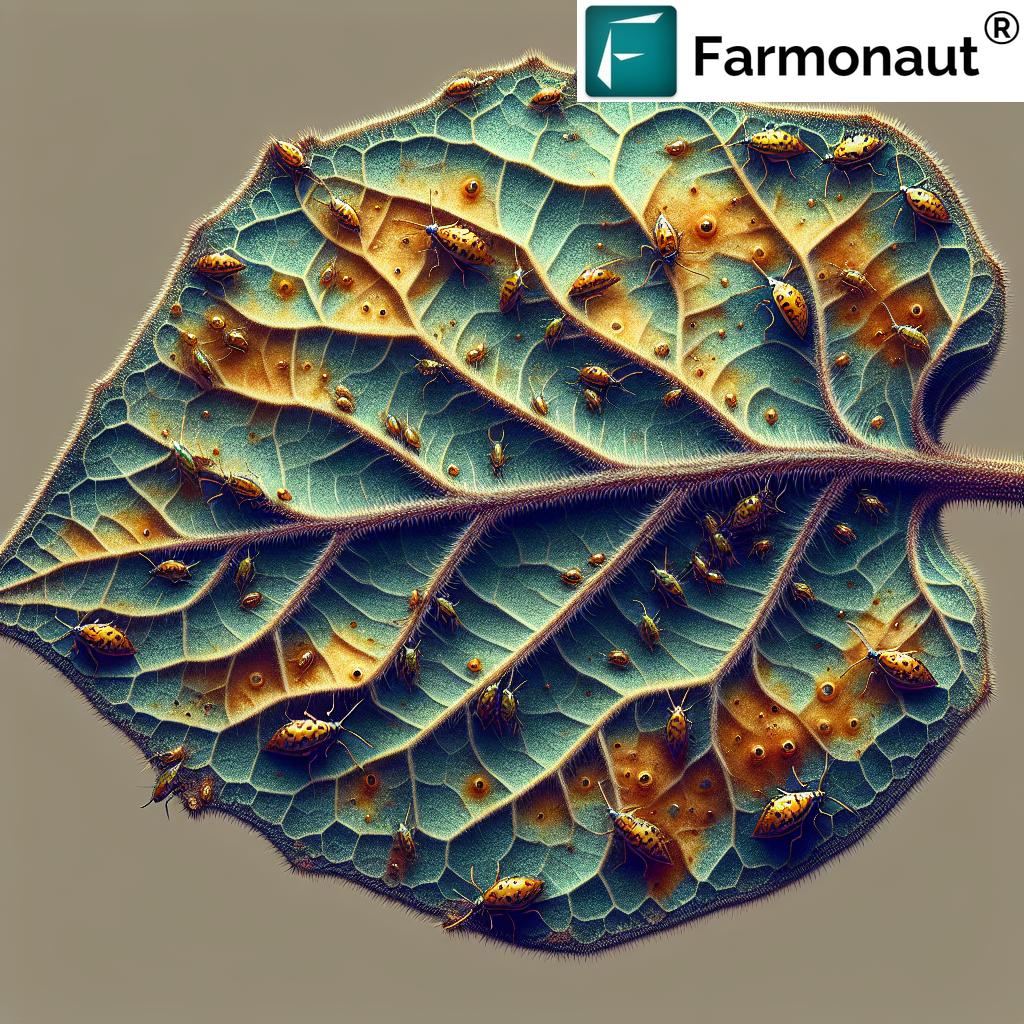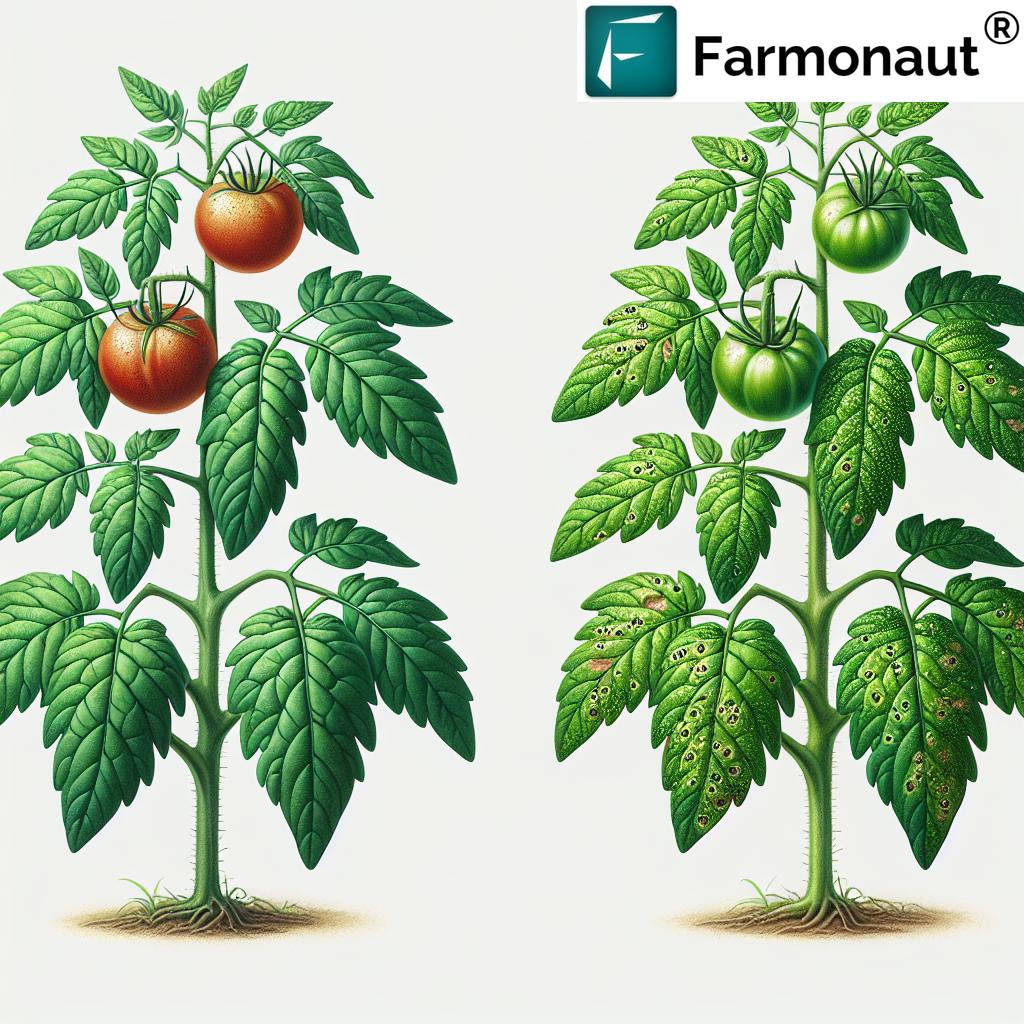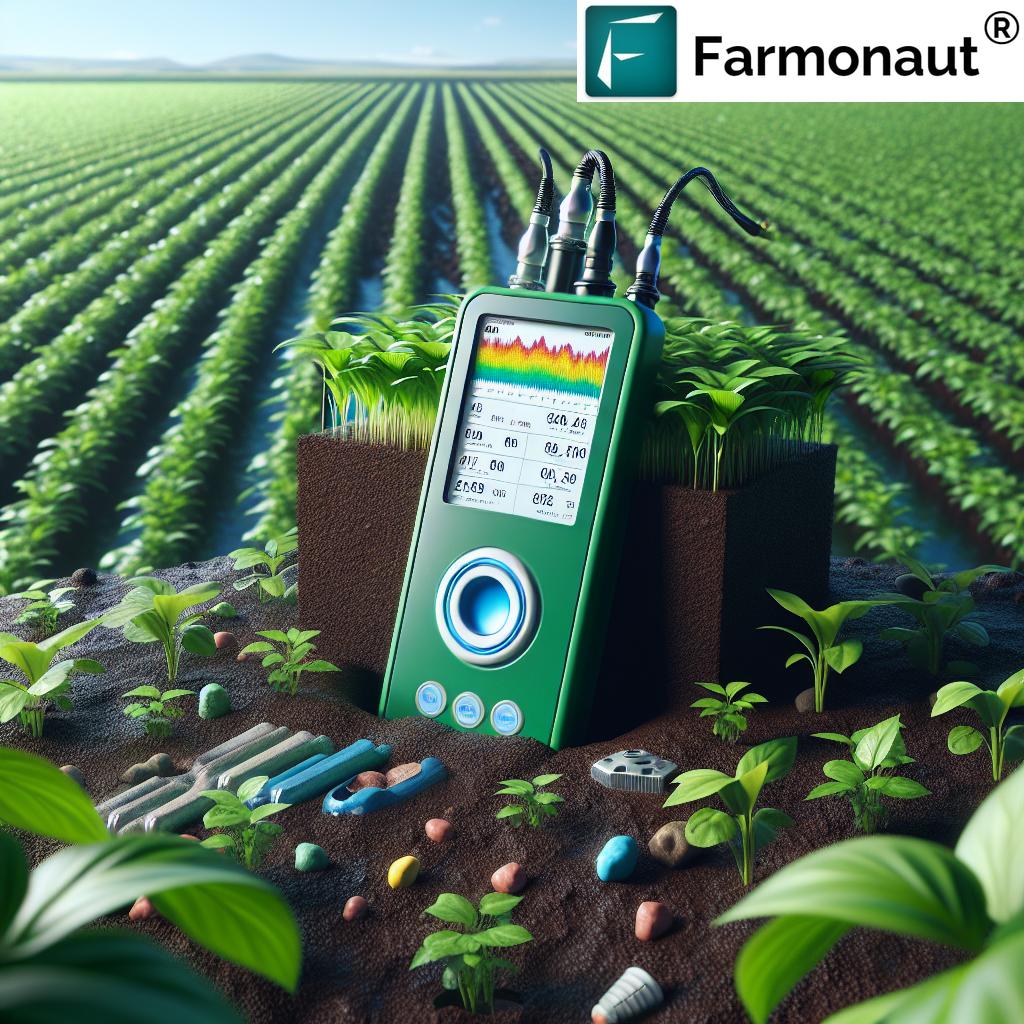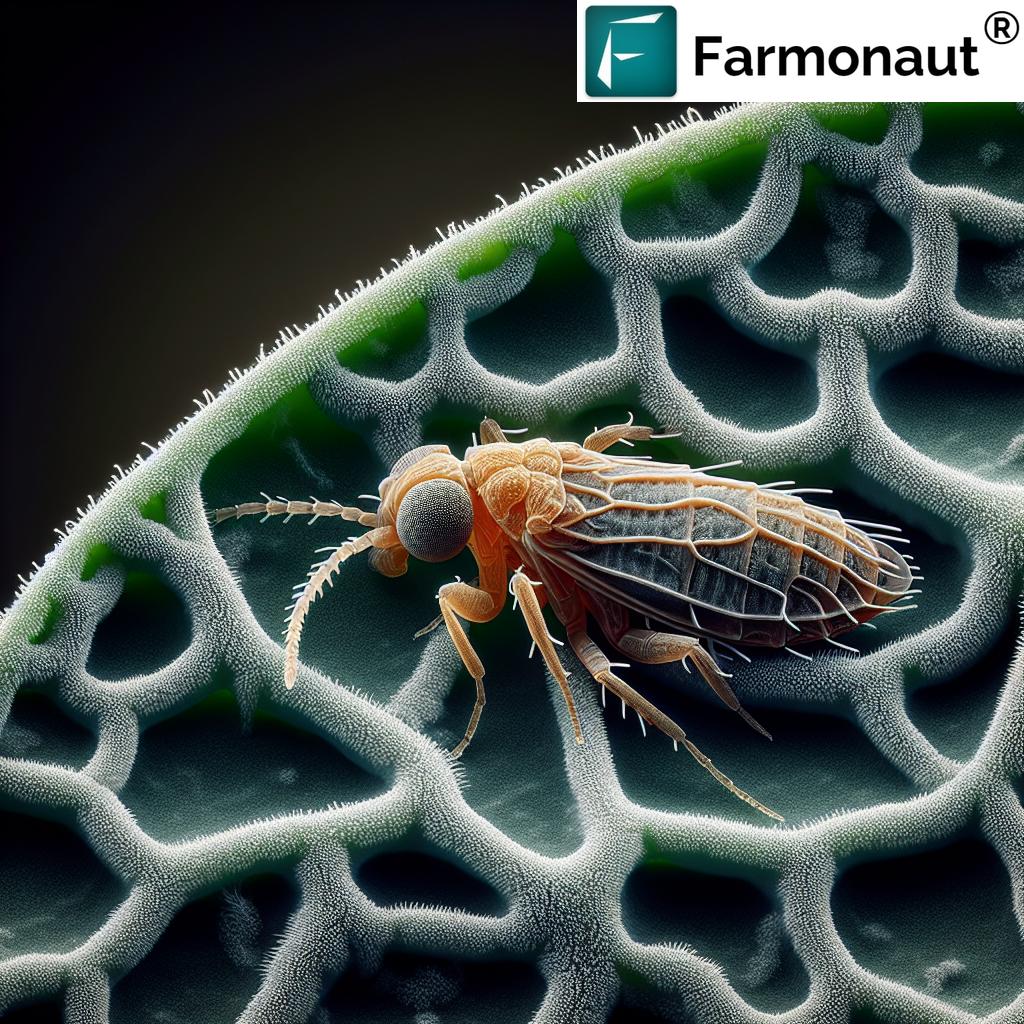Organic Pest Control: Protecting Eggplant, Tomato, and Potato from Lace Bug Infestation

In the world of agriculture and horticulture, protecting our crops from pests is a constant challenge. At Farmonaut, we understand the importance of maintaining healthy crops while minimizing the use of harmful chemicals. In this comprehensive guide, we’ll explore organic pest control methods, focusing on protecting eggplant, tomato, and potato plants from lace bug infestations. We’ll also discuss how our cutting-edge satellite technology can revolutionize pest detection and management.
Understanding Lace Bugs: A Common Pest in Vegetable Gardens
Lace bugs are small, winged insects that can cause significant damage to various plants, including eggplants, tomatoes, and potatoes. These pests get their name from the intricate, lace-like pattern on their wings and thorax. While they may appear delicate, their impact on crops can be devastating.
Identifying Lace Bug Infestations
To effectively control lace bugs, it’s crucial to identify their presence early. Here are some signs to look out for:
- Discolored leaves: Lace bugs feed on the underside of leaves, causing the upper surface to develop a yellowish or bronze color.
- Tiny dark spots: The underside of infested leaves will have small, dark dots, which are actually lace bug excrement.
- Stippling: The feeding activity of lace bugs creates small scratches or stipples on the leaf surface.
- Leaf drop: Severe infestations can cause leaves to wilt and fall off prematurely.
The Impact of Lace Bugs on Eggplant, Tomato, and Potato Crops
Lace bugs can significantly affect the health and yield of eggplant, tomato, and potato plants. These pests primarily target the foliage, which can lead to reduced photosynthesis and weakened plants. Let’s examine the specific impacts on each crop:
Eggplant
Eggplant plants are particularly susceptible to lace bug infestations. The damage caused by these pests can result in:
- Reduced fruit size and quality
- Stunted plant growth
- Decreased overall yield
Tomato
Tomato plants affected by lace bugs may experience:
- Reduced fruit production
- Weakened plant structure
- Increased vulnerability to other pests and diseases
Potato
For potato crops, lace bug infestations can lead to:
- Smaller tuber size
- Reduced overall yield
- Decreased plant vigor
Organic Pest Control Strategies for Lace Bugs
At Farmonaut, we advocate for organic and sustainable farming practices. Here are some effective organic methods to control lace bug infestations:
1. Cultural Control Methods
Cultural control methods focus on creating an environment that is less favorable for lace bugs:
- Proper plant spacing: Ensure adequate space between plants to improve air circulation and reduce humidity.
- Regular pruning: Remove and destroy infested leaves to prevent the spread of lace bugs.
- Weed management: Keep the area around your crops free of weeds, which can serve as alternative hosts for lace bugs.
- Crop rotation: Rotate susceptible crops with non-host plants to disrupt the lace bug life cycle.
2. Physical Barriers
Creating physical barriers can help protect your plants from lace bug infestations:
- Row covers: Use fine mesh row covers to prevent adult lace bugs from reaching your plants.
- Reflective mulch: Apply reflective mulch around plants to confuse and repel lace bugs.
3. Biological Control
Encourage natural predators of lace bugs to help keep their populations in check:
- Beneficial insects: Attract ladybugs, lacewings, and predatory wasps by planting diverse flowering plants nearby.
- Nematodes: Apply beneficial nematodes to the soil to target lace bug nymphs.
4. Organic Sprays and Solutions
When infestations become severe, consider using organic sprays and solutions:
- Neem oil: Apply neem oil to affected plants, focusing on the underside of leaves.
- Insecticidal soap: Use a gentle insecticidal soap solution to control lace bugs without harming beneficial insects.
- Pyrethrin-based sprays: Derived from chrysanthemum flowers, these sprays can be effective against lace bugs when used as directed.
Farmonaut’s Satellite Technology: Revolutionizing Pest Detection and Management

At Farmonaut, we’re proud to offer cutting-edge satellite technology that can transform the way farmers detect and manage pest infestations, including lace bugs. Our advanced system provides several advantages over traditional pest detection methods:
| Feature | Traditional Pest Detection | Farmonaut Satellite System Detection |
|---|---|---|
| Detection Speed | Slow, relies on manual inspection | Rapid, covers large areas in minutes |
| Accuracy | Variable, depends on inspector’s expertise | High, uses advanced algorithms and spectral analysis |
| Coverage Area | Limited to areas physically accessible | Extensive, can monitor entire fields and regions |
| Early Warning Capabilities | Limited, often detects infestations after visible damage | Advanced, can detect stress indicators before visible symptoms appear |
Our satellite-based pest detection system offers farmers the following benefits:
- Early detection: Identify potential pest issues before they become severe infestations.
- Precise targeting: Pinpoint exact locations of pest activity for more efficient treatment.
- Resource optimization: Reduce unnecessary pesticide use by treating only affected areas.
- Time-saving: Eliminate the need for extensive manual field inspections.
- Data-driven decisions: Make informed choices based on accurate, real-time information.
To learn more about how Farmonaut’s satellite technology can revolutionize your pest management strategies, visit our app page or explore our API documentation.
Implementing an Integrated Pest Management (IPM) Approach
At Farmonaut, we recommend adopting an Integrated Pest Management (IPM) approach to effectively control lace bugs and other pests. This strategy combines various control methods to achieve long-term, sustainable pest management. Here’s how to implement IPM for lace bug control:
1. Monitoring and Scouting
Regular monitoring is crucial for early detection of lace bug infestations. Use Farmonaut’s satellite technology in conjunction with manual scouting to identify potential issues:
- Set up a regular schedule for field inspections
- Use our satellite imaging to identify areas of concern
- Examine the underside of leaves for signs of lace bug activity
- Keep detailed records of pest populations and damage levels
2. Setting Action Thresholds
Determine the point at which pest control action becomes necessary:
- Establish acceptable levels of pest presence before intervention
- Consider factors such as crop stage, weather conditions, and economic impact
- Use Farmonaut’s data analytics to help determine optimal thresholds
3. Prevention
Implement preventive measures to reduce the likelihood of lace bug infestations:
- Choose resistant plant varieties when available
- Maintain proper plant nutrition and irrigation
- Implement crop rotation and intercropping strategies
- Use our satellite-based soil moisture and nutrient monitoring to optimize plant health
4. Control
When action thresholds are reached, employ a combination of control methods:
- Cultural controls: Implement the methods discussed earlier, such as proper spacing and pruning.
- Physical controls: Use row covers and reflective mulch to deter lace bugs.
- Biological controls: Encourage natural predators and use beneficial nematodes.
- Chemical controls: If necessary, use organic sprays and solutions as a last resort.
5. Evaluation
Continuously assess the effectiveness of your IPM strategy:
- Use Farmonaut’s satellite monitoring to track changes in crop health over time
- Analyze pest population trends and crop yield data
- Adjust your approach based on results and new information
Case Study: Successful Lace Bug Control in Organic Eggplant Production
To illustrate the effectiveness of organic pest control methods and Farmonaut’s technology, let’s examine a hypothetical case study of an organic eggplant farm dealing with lace bug infestations:
Background
A 10-acre organic eggplant farm in California had been struggling with recurring lace bug infestations, resulting in reduced yields and poor fruit quality. The farm owner decided to implement an IPM approach using Farmonaut’s satellite technology and organic control methods.
Implementation
- Monitoring: The farmer subscribed to Farmonaut’s satellite monitoring service, which provided weekly updates on crop health and potential pest hotspots.
- Prevention: Based on Farmonaut’s soil moisture data, the farmer optimized irrigation practices to reduce plant stress and susceptibility to pests.
- Cultural controls: The farmer implemented wider plant spacing and regular pruning to improve air circulation.
- Biological controls: Flowering plants were introduced around the field edges to attract beneficial insects.
- Organic sprays: When necessary, neem oil and insecticidal soap were applied to affected areas identified by satellite imaging.
Results
After one growing season of implementing this integrated approach:
- Lace bug populations were reduced by 75% compared to the previous year
- Crop yield increased by 30%
- Fruit quality improved significantly
- Pesticide use was reduced by 60%, leading to cost savings and environmental benefits
This case study demonstrates the potential of combining organic pest control methods with advanced technology to achieve sustainable and effective pest management.
The Future of Pest Control: Farmonaut’s Ongoing Research and Development
At Farmonaut, we’re committed to continuous innovation in the field of pest control and crop management. Our research and development team is currently working on several exciting projects that promise to further revolutionize pest detection and control:
1. AI-Powered Pest Identification
We’re developing advanced machine learning algorithms that can automatically identify specific pest species from satellite and drone imagery. This technology will enable even faster and more accurate pest detection, allowing farmers to take swift action against lace bugs and other crop threats.
2. Predictive Pest Modeling
By combining historical pest data, weather patterns, and crop health information, we’re creating predictive models that can forecast potential pest outbreaks before they occur. This proactive approach will help farmers implement preventive measures more effectively.
3. Precision Application Technologies
We’re exploring ways to integrate our satellite data with precision application technologies, such as variable-rate sprayers and autonomous robots. This integration will allow for highly targeted pest control treatments, minimizing chemical use and maximizing efficiency.
4. Blockchain-Based Pest Management Records
To enhance traceability and transparency in organic farming, we’re developing a blockchain-based system for recording pest management practices. This will help organic farmers demonstrate their compliance with certification standards and build consumer trust.
Stay tuned to our app and API documentation for updates on these exciting developments!
Conclusion: Embracing Organic Pest Control for a Sustainable Future
As we’ve explored in this comprehensive guide, protecting eggplant, tomato, and potato crops from lace bug infestations requires a multifaceted approach. By combining traditional organic pest control methods with cutting-edge technology like Farmonaut’s satellite monitoring system, farmers can effectively manage pest populations while minimizing environmental impact.
Key takeaways from this guide include:
- The importance of early detection and identification of lace bug infestations
- The effectiveness of cultural, physical, and biological control methods in organic pest management
- The role of technology in revolutionizing pest detection and control strategies
- The benefits of implementing an Integrated Pest Management (IPM) approach
- The potential for significant improvements in crop yield and quality through sustainable pest control practices
At Farmonaut, we’re dedicated to empowering farmers with the tools and knowledge they need to succeed in organic and sustainable agriculture. By embracing these principles and technologies, we can work together to create a more resilient and environmentally friendly food production system.
To learn more about how Farmonaut can help you implement effective pest control strategies on your farm, visit our website or download our app:
For developers interested in integrating our powerful satellite and weather data into their own applications, check out our API documentation.
FAQs: Organic Pest Control for Lace Bugs
-
Q: Are lace bugs harmful to humans?
A: No, lace bugs do not pose a direct threat to humans. They primarily feed on plant sap and do not bite or sting people. -
Q: How long does it take for organic pest control methods to show results?
A: The effectiveness of organic pest control methods can vary, but you may start seeing results within 1-2 weeks. Consistent application and an integrated approach are key to long-term success. -
Q: Can I use Farmonaut’s satellite technology for small-scale or home gardens?
A: While our technology is primarily designed for larger agricultural operations, we’re working on developing solutions for smaller-scale farmers and home gardeners. Stay tuned for updates! -
Q: Are there any natural predators of lace bugs?
A: Yes, several natural predators feed on lace bugs, including ladybugs, lacewings, assassin bugs, and some species of parasitic wasps. -
Q: How often should I apply organic sprays for lace bug control?
A: The frequency of application depends on the severity of the infestation and the specific product used. Generally, applications every 7-14 days are recommended, but always follow the instructions on the product label.
Ready to take your pest control strategy to the next level? Subscribe to Farmonaut’s advanced satellite monitoring service today:









